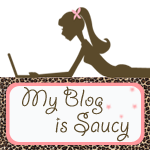In honor of Earth Day on April 22, this week's Friday's Feature Cause is about going green.
Today I have 10 easy things you can change in your everyday world to make a difference. Most of these are very simple and actually save you money in the long run. (some even in the short run). Then because I'm all about recycled cloth material, I have a super simple pattern for sewing your own cloth napkins. (I just can't see paying $6.00 for 4 napkins, when I have a ton of material at home)
10 Easy Ways to Go Green
- Install compact fluorescent light bulbs (CFLs) when your older incandescent bulbs burn out. I did this over a year ago and haven't had to replace a bulb yet, plus they use 1/5 the wattage of my old bulbs. Don't ask me to calculate my savings here, just know I've save the cost of the bulbs already.
- Wash clothes in cold water whenever possible. As much as 85 percent of the energy used to machine-wash clothes goes to heating the water. The only time I use warm water is on my white loads. Cold water also preserves the color and size in dark loads.
- Install a low-flow showerhead. They don't cost much, and the water and energy savings can quickly pay back your investment. I have a low flow faucet in my kitchen and the water pressure is the same as before. I didn't notice the difference until I had to wait 10 extra seconds to fill up a gallon jug.
- Use a water filter to purify tap water instead of buying bottled water. Not only is bottled water expensive, but it generates large amounts of container waste. An easy way to save money here!
- Wear clothes that don't need to be dry-cleaned. This saves money and cuts down on toxic chemical use. This may be my favorite tip, because it saves so much money!
- Buy locally raised, humane, and organic meat, eggs, dairy, and produce whenever you can. Purchasing from local farmers keeps money in the local economy and cuts down on shipping costs. I'm in the transportation business and a truckload of produce costs a lot to haul, plus the fuel those guys go through. There is plenty of other products out there to keep drivers busy without produce.
- Plant drought-tolerant native plants and grass in your yard. Many plants need minimal watering. Personally, I can't stand to water the yard, but love my flowers and veggies. Checking to see what works best in your area makes a huge difference.
- Unplug appliances when you're not using them. Or, use a "smart" power strip that senses when appliances are off and cuts phantom energy use. I had no idea that so many of the appliances, televisions, etc in my house use phantom power. Just because you think they are off, doesn't mean they are.
- Clean or replace your air conditioning filter. It sounds automatic, but a dirty filter causes your system to use more energy and you to have filthy air.
- Utilize your city or towns recycling program. Many cities have updated their programs to accept more products than previously. Check to see what you could be recycling that you aren't. I had no idea my town had added a few more plastic codes to their list until I called to find out - saves even more in trash!
Cloth Napkin Directions
- Napkins can be made in any size square you are comfortable with. The standard sizes are 12, 14, and 16 inch squares. The easiest way to make sure they will all be square is to make a poster board template.
- Your template should be square and should be 1/2 inch larger than your finished napkin size. For example, make a 16 1/2-inch-square template for a 16-inch-square napkin.
- Place the template on the wrong side of your fabric, and trace around the template with a fabric marking pen or fabric chalk.
- Cut out each fabric square along traced marking line.
- Press each raw fabric edge under 1/4" and then press that edge under 1/4" again.
- Pin the fabric edges into place. Use a sewing machine to stitch the napkin hem. (Hand sew the napkin hem in place with a backstitch if you do not have access to a sewing machine.)
- Add a decorative touch to the finished napkins by sewing a decorative hand or machine stitch on the right side of the fabric along the edge of the napkin.
What are you doing in honor of Earth Day?
















We are taking part in a clean up event our city holds every year. This year it's the 24th. An exciting day of trash picking! LOL! hey, saw that you entered the giftcard contest at TOAK, and I thought that you might want to enter mine, too! I'm giving away a $100 CSNlighting giftcard. Hope you can stop by and check it out soon! :)
ReplyDeleteHello there, stopping by from SITS. Have fab day.
ReplyDeleteI'm planning on sewing napkins this weekend. We use far too many paper towels around here. Also, yoga pants do not have to be dry cleaned so I'm good with that one.
ReplyDelete